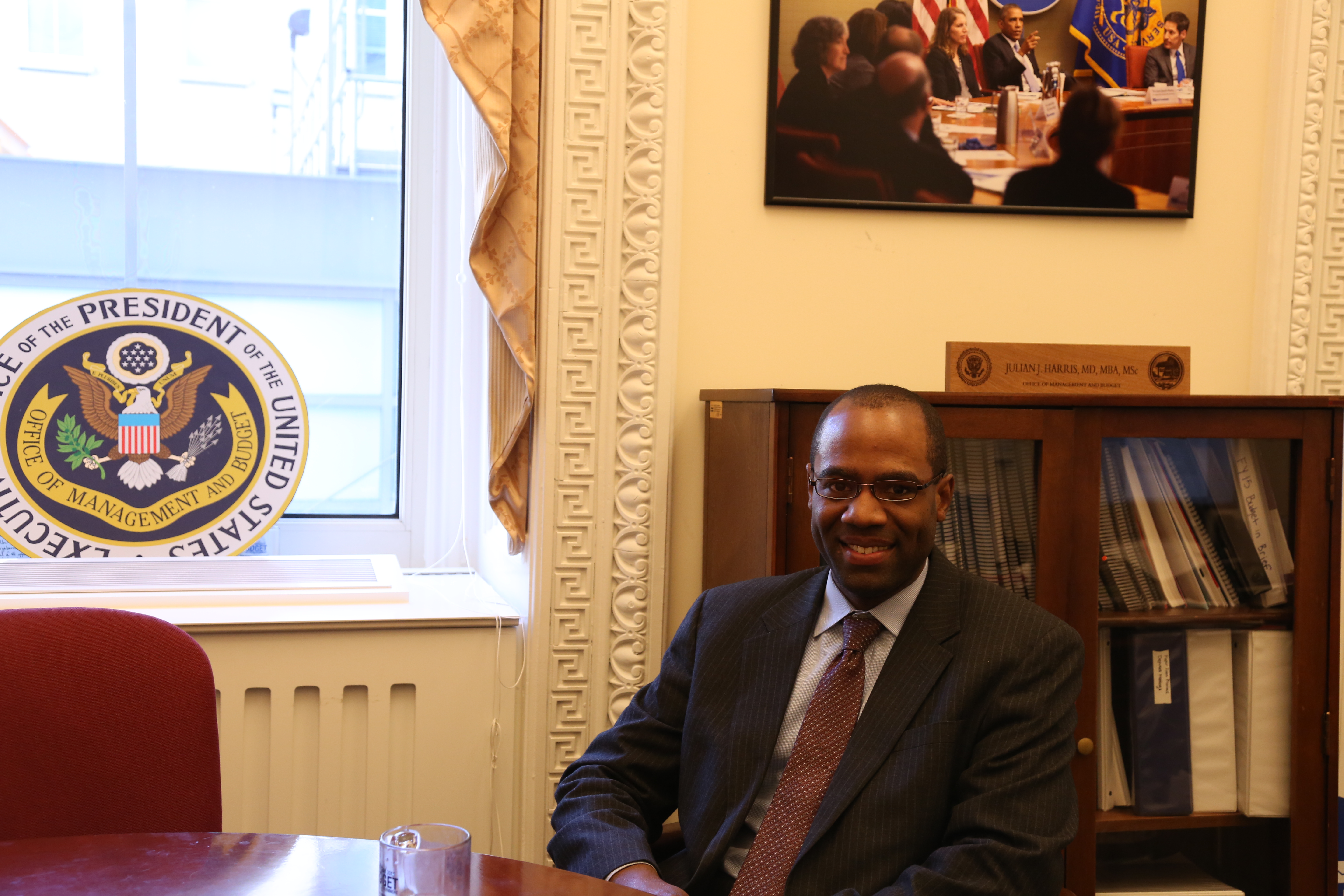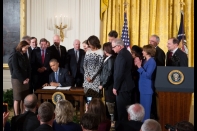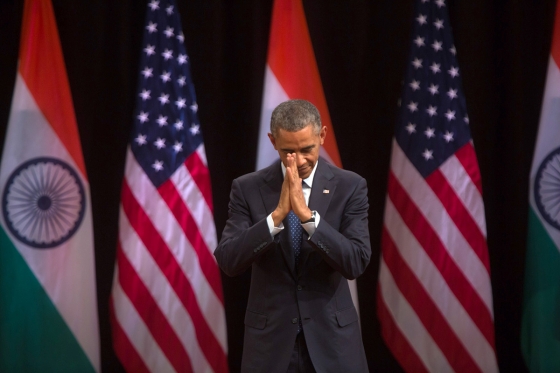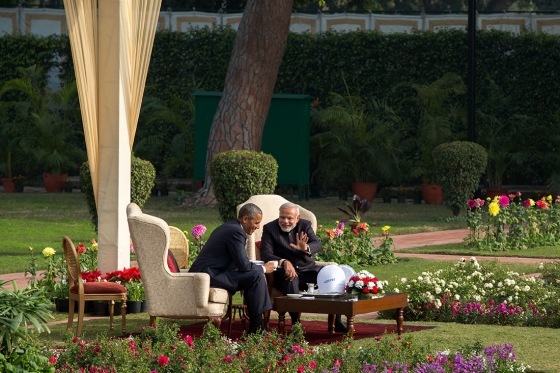Thank You
For your submission
-
In September 2009, the President announced that — for the first time in history — White House visitor records would be made available to the public on an ongoing basis. Today, the White House releases visitor records that were generated in October 2014. This release brings the total number of records made public by this White House to more than 4.26 million — all of which can be viewed in our Disclosures section.
-
I have lived a lot of life, most of it on the go, and always an adventure. Challenging myself and pushing limits. From 25 to 35, I worked hard and lived with that sense of freedom, full of fun and exploration, believing every year would only get better and better. In that decade, I took some chances – moved to three different cities where I didn’t know anyone, and I took jobs I wasn’t sure about. I was always confident things would work out, or at least I could figure it out how to make it work.
I was lucky. Things did work, and my life in that time was wonderful. I deepened friendships and made even more great friends, completed graduate degrees, traveled the world, saw my nephews born and grow, helped elect a Senator and then a President, lived my dream of improving policies to help others, and even fell in love with the most incredible woman. I remember thinking, here I was in my mid-30s truly living the ultimate adventure, living life to the fullest every day – but also knowing the best years of my life were still in front of me. What I didn’t know during those 10 years was how uncertain my future really was, and how much control I was about to lose.
Two months after my wife said yes to being my adventure partner for life, I was diagnosed with Stage IV cancer. In the same decade I spent building my life, the cancer had been growing, and silently threatening to tear it down. Right at the dawn of my future. Literally, the worst news, at the worst time. Like any good sports fan, I turned to statistics to understand the odds. Only the numbers were no help. For the stage and type of cancer I have, my chances of seeing my 40th birthday were only about 10 percent.
Fortunately I had been paying out of my paycheck for health insurance through my employer. I’d never really given the choice of buying health coverage much thought. I never thought that one day the small choice to get covered would be one of the most important things to keep me alive. Insurance helped me do two things that greatly improved my chances – it helped me get diagnosed, and it helped me begin my treatment quickly.
-
This week, the President made history by being the first sitting President to make a second visit to India. He and the First Lady also traveled to Saudi Arabia to pay their respects to the late King. And back at home, the President convened a meeting with U.S. mayors and honored outgoing Secretary of Defense Chuck Hagel. That's January 23 to January 29 or, "Namaste Obama."
-
"Behind the Budget" is a series of posts featuring audio stories from staffers from across the Office of Management and Budget, discussing aspects of the budget process that most Americans don't get to see.
Underlying the President's FY 2016 budget is a database holding about 600,000 pieces of information across multiple agencies and accounts. The database keeps track of every dollar appropriated by Congress: when it was appropriated, when it was or is going to be obligated -- whether that means signing a contract or placing an order -- and when the dollar goes out the door. It catalogues what the dollar was used for, and why. It's a lot of information, and right now, Aron Greenberg -- who's worked in OMB's Budget Review Division for about 11 years -- is responsible for helping to make sure it's accurate. Listen to him describe the work of the team responsible for doing the final comb of the budget.
Meet Aron Greenberg, Budget Methods Specialist in OMB's Budget Review Division.

"The examining divisions are responsible for helping develop the policies that accomplish specific goals. That's not our gig. We're here to make sure that the policies of the Administration are accurately reflected in the database…So if the Administration wants to spend $10 million on something, it's our responsibility to make sure that $10 million shows up in the database."
-

During his State of the Union Address, President Obama announced that he is launching a new initiative that will help deliver the right treatment to the right patient at the right time. Precision medicine gives medical professionals the resources they need to target the specific treatments of the illnesses we encounter, further develops our scientific and medical research, and keeps our families healthier. As the country that eliminated polio and mapped the human genome, America is well-positioned to lead in a new era of medicine.
While most of today's medical treatments have been designed for the average patient, precision medicine allows us to be more effective than a "one-size-fits-all" technique. It's an emerging approach to promoting health and treating disease that takes into account individual differences in people's genes, environments, and lifestyles. This makes it possible to design targeted treatments for cancer and other diseases. As the President noted in his speech, this revolutionary approach has even reversed cystic fibrosis, an illness once thought unstoppable.
This approach is already saving lives, giving those in the medical field better options, and helping keep families healthy. Read a few of their stories:

William Elder Jr.
William Elder, Jr. was diagnosed with cystic fibrosis (CF) at the age of eight, when the life expectancy for CF patients was very low. Now at 27, Bill is alive thanks to Kalydeco, a treatment of a particular form for his cystic fibrosis and a remarkable drug that treats the underlying cause of his CF, rather than the symptoms.
At a congressional briefing in 2013, Bill told members of the U.S. Senate that just knowing that there were individuals who were researching his condition gave him hope and the strength to continue his treatments and work to be healthier every day. Bill described waking up in the middle of the night after taking his new treatment for the first time. “I sat on the floor of my room for a while slowly breathing in and out through my nose, and then I realized that was it. I had never been able to easily breathe out of my nose before. This was something profound,” he said. He recalls telling his parents, "For the first time in my life, I truly believe that I will live long enough to be a grandfather.”
-
Economic growth in the fourth quarter was consistent with a broad range of other indicators showing solid improvement in the labor market, rising consumer sentiment, increasing domestic energy security, and continued low health cost growth. The combination of consumer spending and fixed investment grew at about the same strong pace as in the third quarter, while more volatile factors that elevated the overall growth rate in the third quarter subtracted from it in the fourth quarter. The President’s approach to middle-class economics, including the proposals he will release in his Budget on Monday, would build on this growth while helping to ensure that our recovery is widely shared with all American families.
FIVE KEY POINTS IN TODAY’S REPORT FROM THE BUREAU OF ECONOMIC ANALYSIS
1. Real gross domestic product (GDP) grew 2.6 percent at an annual rate in the fourth quarter of 2014, according to the advance estimate from the Bureau of Economic Analysis. The report reflects very strong consumption growth, continued increases in residential investment, weaker business investment after two quarters of strong growth, an unusually large decline in federal spending that reversed last quarter’s above-trend increase, and stronger imports, which while subtracting from GDP, partly reflect improved consumer sentiment. Overall, real GDP rose 2.5 percent versus the fourth quarter of 2013. Indeed, today’s report affirms the underlying pattern of resurgence in the economy.

-

Watch Jo Handelsman, Associate Director for Science in the Office of Science and Technology Policy, explain the Precision Medicine Initiative and its significance.
The President's 2016 budget includes investments in an emerging field of medicine that takes into account individual differences in people's genes, microbiomes, environments, and lifestyles -- making possible more effective, targeted treatments for diseases like cancer and diabetes. That's incredibly significant, and this is why:
Right now, most medical treatments are designed for the average patient.
But one size doesn't fit all, and treatments that are very successful for some patients don't work for others. Think about it:
- If you need glasses, you aren't assigned a generic pair. You get a prescription customized for you.
- If you have an allergy, you get tested to determine exactly what you're allergic to.
- If you need a blood transfusion, it has to match your precise blood type.
Enter Precision Medicine: health care tailored to you.
-
The President traveled to Fort Myer, Virginia yesterday for the Armed Forces farewell ceremony in honor of our 24th Secretary of Defense, Chuck Hagel.
In his remarks, the President acknowledged Secretary Hagel's courageous work during his lifelong service as a decorated veteran and Secretary:
[T]oday is a celebration of a quintessentially American life -- a man from the heartland who devoted his life to America. Just imagine, in your mind’s eye, the defining moments of his life. The kid from Nebraska who, as Marty said, volunteered to go to Vietnam. The soldier outside Saigon, rushing to pull his own brother from a burning APC. The deputy at the VA who stood up for his fellow Vietnam vets who were exposed to Agent Orange. The senator who helped lead the fight for the Post 9/11 GI Bill, to give this generation of heroes the same opportunities that he had.
I asked Chuck to lead this department at a moment of profound transition. And today we express our gratitude for the progress under his watch.
-
"Behind the Budget" is a series of posts featuring audio stories from staffers from across the Office of Management and Budget, discussing aspects of the budget process that most Americans don't get to see.
In some ways, it's always budget season for the OMB health policy team: At any point in the year, they're likely to be either developing, negotiating, or implementing two or three fiscal year budgets at a time. This year's budget in particular includes a range of proposals, from those that make efficient improvements to health care acess and quality, to those with broader public health implications. That means, for instance, programs that invest in preparedness and disease prevention, efforts to combat antimicrobial resistance, and the NIH-lead effort to accelerate advances in the field of precision medicine.
Meet Dr. Julian Harris, OMB Associate Director for Health.

-
January 29, 2015
09:34 AM ESTYoung adults historically faced unique challenges in obtaining health insurance coverage. In 2009, nearly one-third of young adults ages 19-25 lacked health insurance, more than twice the rate for Americans overall. But the nation has since made dramatic progress in expanding coverage among young adults, thanks to the Affordable Care Act’s provision allowing young adults to remain on a parent’s plan through age 26 and its broader expansion of coverage through the Health Insurance Marketplaces and Medicaid.
From the time the first of these provisions took effect in 2010 through the second quarter of 2014, the uninsured rate among young adults dropped by more than 40 percent, corresponding to 4.5 million additional insured young adults. These large gains among young adults are a major reason that the nation’s overall uninsured rate was at or near the lowest level ever recorded as of the second quarter of last year. Moreover, there is evidence young adults’ expanded access to coverage is increasing their access to health care, improving their health and financial security, and potentially generating long-term benefits for our economy.
Even with this progress, almost one in five young adults remains uninsured. But many of these young adults are eligible for financial assistance to obtain coverage through the Health Insurance Marketplaces or eligible for coverage through Medicaid. This year’s Open Enrollment period ends on February 15th, so those still without insurance should visit HealthCare.gov or call 1-800-318-2596 to get covered now.
-
"Behind the Budget" is a series of posts featuring audio stories from staffers from across the Office of Management and Budget, discussing aspects of the budget process that most Americans don't get to see.
Tucked away in a series of offices in the New Executive Office Building are a group of program examiners who have been helping to develop the budget for months. That means wrangling and sorting through the many ideas brought to the table -- from agencies, from other White House offices, and from the Office of Management and Budget itself. A key part of this year's budget is the investments in both higher and early education. Listen to two examiners in this area describe their role in the budget process.
Meet Erin O'Brien, Program Examiner for Student Aid Programs.

-
January 28, 2015
05:39 PM ESTEd. Note: This post is cross-posted at the U.S. Small Business Administration's (SBA) blog. You can read the original post here.
During his State of the Union address, President Obama noted that “21st-century businesses, including small businesses, need to sell more American products overseas. … 95 percent of the world’s customers live outside our borders, and we can’t close ourselves off from those opportunities.”
Today, 98 percent of American companies that export are small businesses, but more than half of our exporters are only selling to one foreign market, usually Canada or Mexico.
It’s time to take action to help more entrepreneurs reach new markets for their goods and services.
-
"The peace we seek in the world begins in human hearts. And it finds its glorious expression when we look beyond any differences in religion or tribe, and rejoice in the beauty of every soul."
On his last day in India, President Obama delivered a message from America to the people of India on the importance of our relationship as true global partners. "I’m here because I’m absolutely convinced that both our peoples will have more jobs and opportunity, and our nations will be more secure, and the world will be a safer and a more just place when our two democracies -- the world’s largest democracy and the world’s oldest democracy -- stand together," he said.
-

Ed. note: This is cross-posted on the U.S. Environmental Protection Agency's blog. See the original post here.
2014 was the hottest year on record, and each of the last three decades has been hotter than the last.
In mountain towns that depend on winter tourism, the realities of climate change really hit home. Shorter, warmer winters mean a shorter season to enjoy the winter sports we love—and a financial hit for local economies that depend on winter sports.
Even if you hate winter, climate change affects you – because climate risks are economic risks. Skiing, snowboarding and other types of winter recreation add $67 billion to the economy every year, and they support 900,000 jobs.
Last week I went to the X-Games in Colorado to meet with some of our country’s top pro snowboarders and the businesses that support them to hear how they are taking action on climate.
-
January 28, 2015
10:33 AM EST
President Barack Obama and First Lady Michelle Obama view the Republic Day Parade with President Pranab Mukherjee and Prime Minister Narendra Modi from the Rajpath saluting base in New Delhi, India January 26, 2015. (Official White House Photo by Pete Souza)
Sixty-five years ago this week, India's post-independence democratic constitution went into effect, paving the way for the country to become not only a democracy but the world's largest democracy. Today, as a country of well over a billion people encompassing great diversity of ethnicity and economic status and spanning crowded cities and remote villages, India is a paradigm of both the challenges and the successes of building a government that seeks to empower all its people.
This week, as I travel to India with President Obama on the occasion of Republic Day, I am heartened to see an extensive portfolio of projects that OPIC has supported with financing and political risk insurance to advance development in India in sectors from power generation to technology to small business finance. As the U.S. Government’s development finance institution, OPIC has invested nearly $2.7 billion across 148 development projects in India since 1974. Over the past five years, our portfolio in India has increased more than five-fold to $734.3 million.
-
Earlier today, Video Director Adam Garber sent the following message to the White House email list earlier today, noting that the deadline for White House Student Film Festival submissions is February 2. If you're a student filmmaker and you want to submit a video -- or you know someone else who fits that description -- visit our Student Film Festival page here!
Didn't get the email? Sign up for updates here.
Are you a student filmmaker with big ideas about the importance of service and giving back? Do you know a young person who is?
-
2014 saw dramatic reductions in the amount of Americans without health insurance, corresponding with the estimated 10 million people who have already gained health insurance since the beginning of the Affordable Care Act open enrollment period. As more Americans gain coverage and we approach the February 15th HealthCare.gov enrollment deadline, one artist highlights what these diverse Americans have in common in a series of shareable graphics.
Do any of these remind you of someone you know?
Share it with them using the buttons below each image.
-
January 27, 2015
12:00 PM ESTToday, the President is taking another step to protect our most valuable natural resources. Relying on an authority used by presidents of both parties since Eisenhower, President Obama is designating 9.8 million acres in the waters of the Beaufort and Chukchi Seas off Alaska’s coast as off-limits to consideration for future oil and gas leasing. This action builds on recent steps by the President to protect Bristol Bay and the Arctic National Wildlife Refuge.
Teeming with biological diversity, these areas in the Beaufort and Chukchi are part of one of the last great marine wildernesses left untouched by development. Endangered whales swim through the icy seas, walruses and bearded seals feed on the Hanna Shoal, and more than 40 species of fish like cod and herring grant fishermen their livelihoods. Each year, the bowhead whale hunt draws Native communities throughout northern Alaska, as essential for their sustenance as it is to their way of life and cultural history.
-
"Chalein saath saath; forward together we go."
--India-U.S. Delhi Declaration of Friendship
President Obama and the First Lady traveled to India this week -- their first time visting the South Asian nation since Prime Minister Narendra Modi was sworn in on May 26, 2014. America and India are true global partners in the work of strengthening economies and strong democracies. That is why the President is the first to have visited India twice while in office.
-
"Passions still fly on immigration, but surely we can all see something of ourselves in the striving young student, and agree that no one benefits when a hardworking mom is snatched from her child, and that it’s possible to shape a law that upholds our tradition as a nation of laws and a nation of immigrants."
-- President Obama, State of the Union Address, January 20, 2015
On November 20, 2014, President Obama took executive action to start fixing our broken immigration system so it works better for our people and our economy. The three main pillars of his action include:
- Making it easier and faster for high-skilled immigrants, graduates, and entrepreneurs to stay and contribute to our economy, as many business leaders have proposed.
- Dealing responsibly with certain undocumented immigrants who are DREAMers or parents of citizens or lawful permanent residents, by requiring that they pass background checks and pay their fair share of taxes.
- Building on our progress at the border and enforcing our immigration laws in smarter, more effective ways.
These actions not only live up to our heritage as a nation but are essential to building on our hopes for a brighter future. In fact, the President's steps will allow people to contribute more fully to their communities and spark an economic boost for every single state.
Check out the map below to see exactly how the new steps we're taking to fix our broken immigration system will improve the economy in your state:
- &lsaquo previous
- 1
- 2
- 3
- 4
- 5
- 6
- 7
- 8
- 9
- …
- next &rsaquo


















